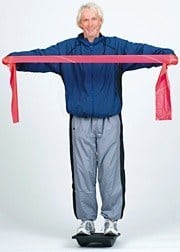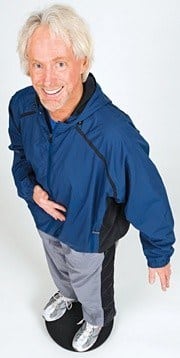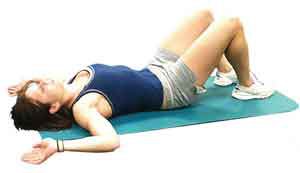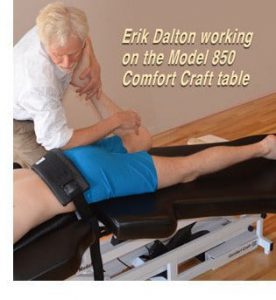
Many therapists wrestle with maintaining proper body mechanics, but some have discovered a simple exercise TOOL that dramatically enhances their therapeutic skills. I’ve found that training five to 10 minutes a day on a rocker board significantly improves my balance, core stability, strength and endurance. Since balance is the critical building block making movement possible, any exercise to improve balance will surface in the quality of your touch.
Clients consciously or unconsciously sense if a therapist is centered and balanced. In the absence of dynamic body balance, therapists’ movements often are awkward and jerky, known as the “jiggling hands” syndrome. Conversely, a body worker with a firm and steady touch exudes confidence as body weight travels evenly through the hands, torso, pelvis, and into the legs and feet to form a stable working foundation.

How Do Balance Boards Work?
When the body senses a change of surface, it self-corrects to achieve appropriate positions for that particular movement. These rapid adjustments rely on proprioceptors embedded in muscles, ligaments and joints to detect speed and degree of stretch. The body’s proprioceptors are highly refined motion sensors, and balance boards help train these sensors. While the square rocker board (Fig. 1) allows for one plane of instability, the round wobble board (Fig. 2) provides multiple planes for the most challenging workout. Rocker and wobble boards are fun and safe, but be sure to purchase one with a tactile surface on TOP and nonskid surface below, such as those depicted in the photos.
Technique Tips
- Always stay within your functional threshold of balance. Hold on to a wall or doorway as needed.
- Strive to maintain balance in order to train the body to move efficiently.
- Pull your navel toward your back without flattening lumbar curve to activate dynamic core stabilizers.
- Contract your gluteus maximus muscles with more weight shifted to your HEELS. Slowly rock back and forth to improve posture and restore proper hip-extensor firing order.
Regardless of age or ability, daily use of a balance board boosts overall fitness, core strength and therapeutic performance. By improving body and spatial awareness through dynamic balance board exercises, the therapist utilizes less energy, which promotes greater core stability, mobility, agility and touch.
On sale this week only!
Save 25% off the "Dalton Technique Treasures" eCourse
The “Dalton Technique Treasures” eLearning course is a compilation of some of Erik’s favorite Myoskeletal Alignment Techniques (MAT). Learn MAT techniques to assess and address specific sports injuries, structural misalignment, nervous system overload, and overuse conditions. ON SALE UNTIL July 29th! Get Lifetime Access: As in all our eLearning courses, you get easy access to the course online and there is no expiry date.







